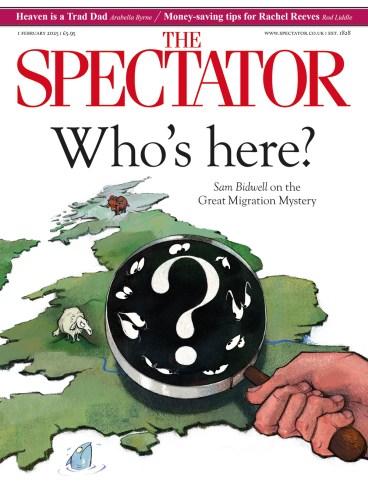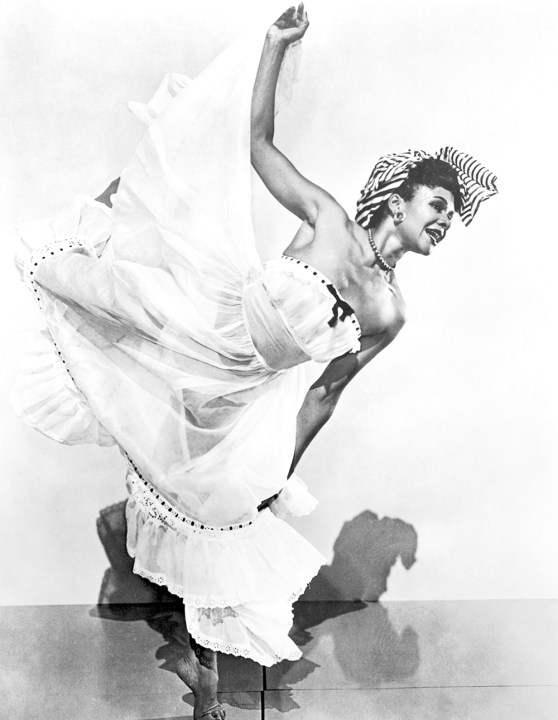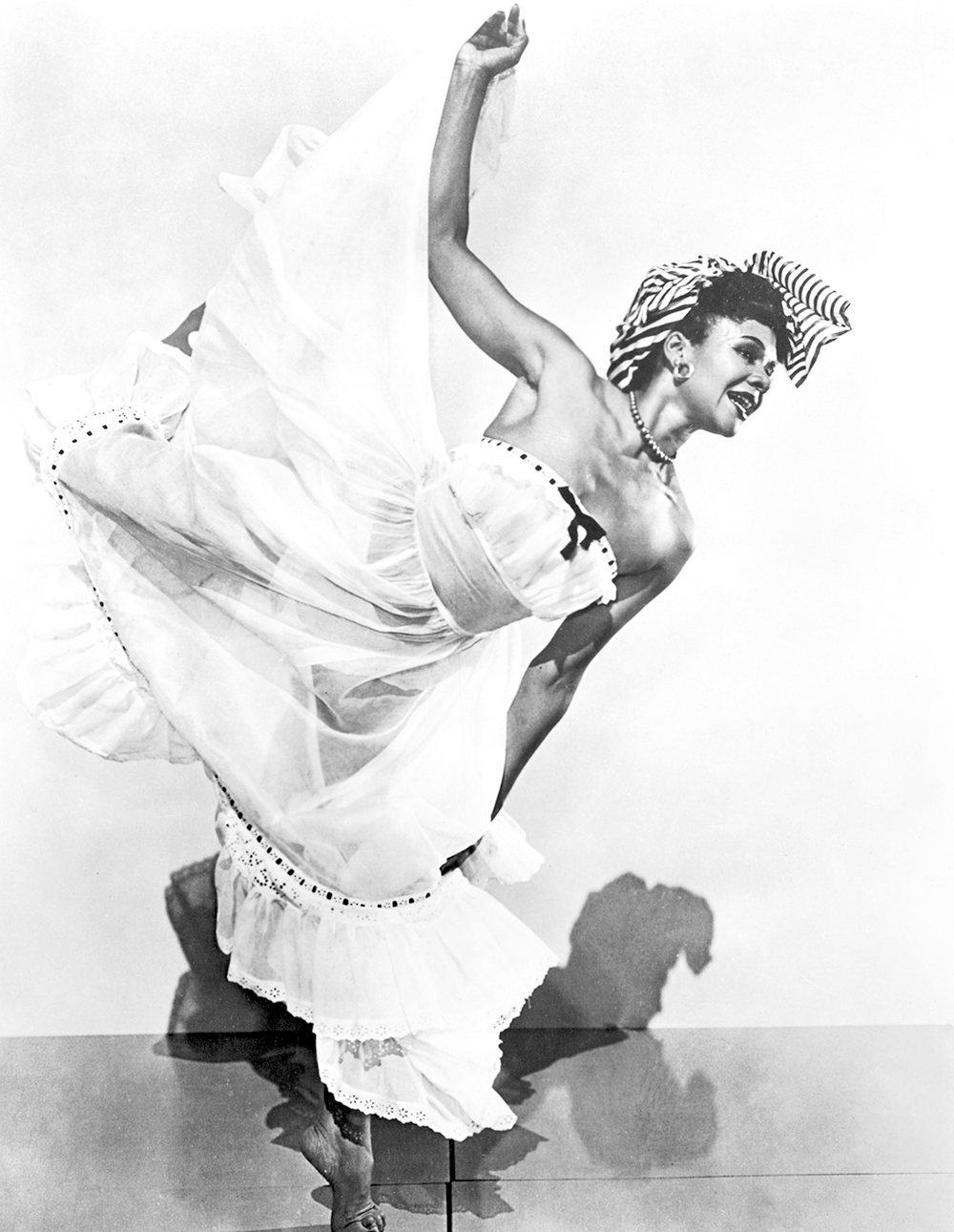
Arms outstretched, head thrown back, flounced skirt rippling over a raised leg. The 1942 photograph of Sophie Maslow dancing in her own creation Folksay makes her look as if she is performing in Seven Brides for Seven Brothers or some MGM musical spectacular. Yet Maslow was a radical artist, who asserted that modern dance was a transformational power for good, and devoted her 50-year career to the belief that it belonged to everyone. In Folksay, she danced to the Dust Bowl ballads of Woody Guthrie, conjuring an inclusive version of America by reshaping the view of its pioneer spirit.
Loie Fuller’s groundbreaking serpentine dance transformed her into a flame, or an orchid, or a cloud
She told Dance Magazine in 1946:
This is the Age of the Common Man. And it is the common people who are the backbone and the strength and hope of our civilisation and our culture. We as artists, and above all as thinking people, are touched by problems of our fellow man because they are our problems… In our dancing we try to express a common emotional experience. If we succeed, then we have helped make the modern dance healthier and more vital as an art form.
They are words from another age; a reminder that the America of the early 20th century really was a different country.
Maslow is one of the lesser-known figures profiled in Wild Grace, a collective biography of nine women who played a role in forging modern dance. ‘Each pushed boundaries in her own questing way, finding inspiration within herself and the wider spheres she inhabited,’ Sara Veale writes.
Some of her subjects are better remembered. The book begins with Isadora Duncan, who ‘directed her ire at ballet’s aerial preoccupations and responded by leaning into the swerve of gravity’, earning notoriety and legendary status for her uninhibited movements, revealing clothes, tragic private life (two children drowned) and awful death (strangled by her scarf catching in the wheels of a car). Martha Graham had a less colourful reputation but has both a company and a dance technique named after her. Loie Fuller, who made her art out of diaphanous silks and light, is immortalised in the works of others – paintings by Toulouse-Lautrec; a poem by Yeats.
Fuller’s groundbreaking serpentine dance, with its thrusting movements that sent her long skirts flying and transformed her with the help of bespoke lighting into a flame, or an orchid, or a cloud, was so famous in her day that when she arrived, aged 30, at the Folies Bergère in 1892, there was already a serpentine dance on the bill – performed by an imitator who had seen her in New York. ‘Fuller… despaired at the irony of it all – how the only thing standing in the way of her fame was her own fame.’
Other subjects have languished in the archives of dance history. Yet all deserve the attention that Veale – a former dancer and freelance writer for various publications, including The Spectator – lavishes on them. She argues:
It’s been decades since even the youngest of the moderns graced the stage, but their legacies are alive and pulsing. In their refusal to conform, we can find urgent lessons for today.
The book suffers from a slightly unwieldy structure whereby Veale introduces each of her subjects – Duncan, Fuller, Maud Allan, Graham, Anna Sokolow, Maslow, Katherine Dunham, Pearl Primus and Pearl Lang – and then arcs back to tell their story. But, over a timeframe spanning the late 19th century to the 1970s, it is full of anecdote and insight, allowing each woman to emerge in all her rich, convention-defying glory.
The problems they encountered were often remarkably similar. Many were subject to comments about their appearance, because of their refusal to conform to societal norms: Duncan and Fuller were branded as fat; Primus and Dunham fought against the racism that sought to define them; all were, in the broadest sense, political, using dance as a means of self-expression and an agent of change. They worked in a period when the relationship between the culture of nightclubs, theatre and film was much closer to the contemporary dance scene than it is today, and the genuine popularity of their work enabled them to forge their careers.
Take the example of Dunham. She was, in Veale’s words:
The first modern dancer to bring African and Caribbean themes to the mainstream, the founder of America’s first self-supporting black dance company and the first African American hired to choreograph for New York’s Metro-politan Opera.
She was also one of the first dance anthropologists, hugely significant in defining anti-colonial thinking. The style she forged was celebrated both for its ‘shimmering theatricality’ and its cultural authenticity. But it was her company’s appearance on Broadway in 1940 that propelled her from ‘luminary to lodestar’. Her show Tropics and Le Jazz ‘Hot’ was scheduled for just one night but made such a splash it was rebooked for a further three months and inspired George Balanchine to cast Dunham and her dancers in his new Broadway musical, Cabin in the Sky.
On the back of such success, Dunham appeared in the Lena Horne movie, Stormy Weather, but her refusal to ‘play the maid’ stymied her Hollywood career. Returning to Broadway, her Tropical Review of 1943 was a hit with audiences. Yet the critics struggled to place it. One writer described her performance as ‘based on discipline, control and intelligence’. Another judged some of the routines ‘suggestive and offensive’. Yet another remarked wryly: ‘Broadway calls it sex, critics call it art, science calls it anthropology, but whatever it is, it’s worth your money.’
For Veale, the criticisms that Dunham faced echoed the objections to Maud Allan, a Canadian experimental barefoot dancer, whose Vision of Salome had caused similar divisions some 35 years earlier, with calls for a ban on grounds of indecency in many cities to which it toured. It was to do with a general unease about women reclaiming their sexuality. ‘One of Dunham’s most radical acts as an artist was confronting the smart/sexy dichotomy and insisting she could be both,’ Veale writes. A number choreographed by Dunham in which she lounged in a hammock reading Madame Bovary bears comparison with the photograph of Marilyn Monroe reading Ulysses in a swimsuit.
Each of Veale’s subjects had that ability to express herself as an individual. ‘I always danced from what I felt,’ said Sokolow, aged 90, in an interview in 2000. A working-class Jew from New York, she danced with Graham’s company for nine years before setting up her own Dance Unit to cover themes ranging from workplace safety to the terrors of Nazism. ‘These weren’t just artistic meditations but rallying cries for reform,’ says Veale. Sokolow also combined radical politics and shows in union halls with runs on Broadway, ‘wrestling towering ideologies into legible missives that invited audiences to stomp along with their thunder’.
Her work emerged under the auspices of the Workers Dance League, formed in the 1930s to promote dance as a force for social change. Pearl Primus, a black dancer and choreographer of remarkable athletic power, began her career of creating dances that protested against racism thanks to the New Dance Group, a company that emerged from the WDL and is still a force today. Unusually, this took place away from Broadway. One of Primus’s first solos, in 1943, was set to Billie Holiday’s ‘Strange Fruit’, and Veale describes its impact: ‘She thudded in place, slashed across the diagonal. You could hear her body as it slapped the floor, heavy with suffering. She ended with a blunt, thrusting fist in the air.’
Persistence is another theme that runs through Wild Grace. Pearl Lang danced until she was 67, and influenced both Pina Bausch and Madonna, both of whom studied with her. ‘Svelte, lissom and remarkably fleet-footed’, Lang became best known for her interpretation of the roles that Graham had once danced. Simultaneously she was making her own work, based on Jewish material. ‘Movement wasn’t just a demonstration of feeling to Lang, it was a summoning of inner strength, an act of empowerment,’ according to Veale.
Lang’s manifesto – ‘Dancers have to have life in them. It can’t just be steps and technique’ – serves as a credo for the book as a whole. These female dance makers, whose works emerged from an age of hopefulness, are brought back to life, and are an inspiration for the future. ‘It’s with their bold voices in my ears and a furious muster of grace that I pull myself up and continue to stride ahead,’ Veale concludes.








Comments